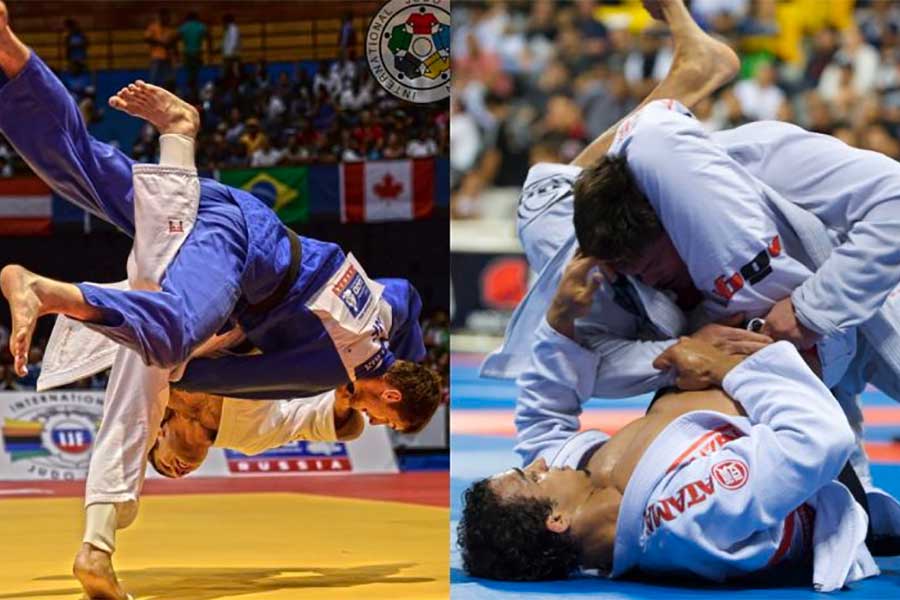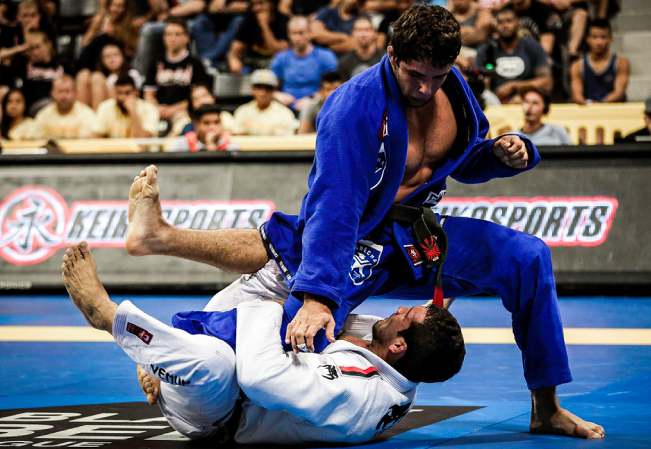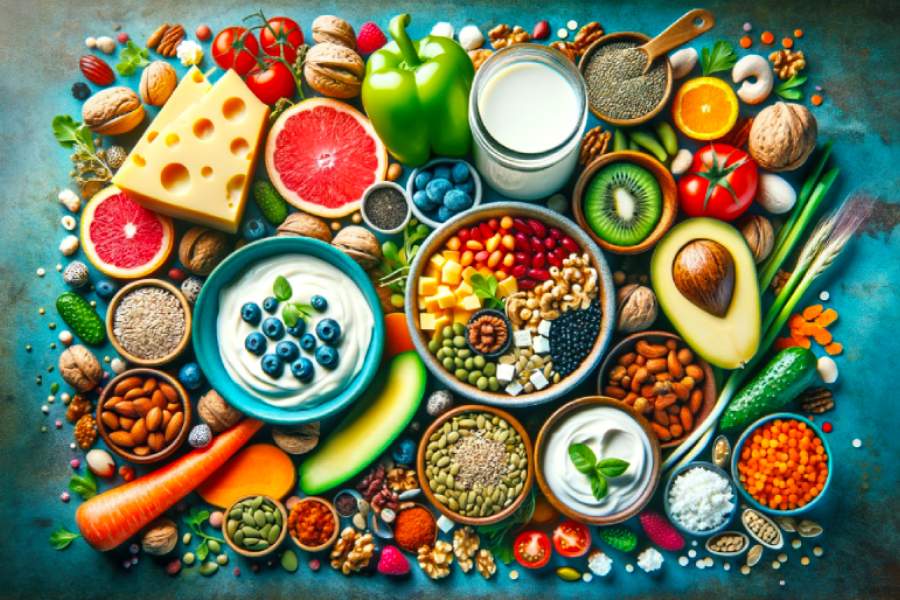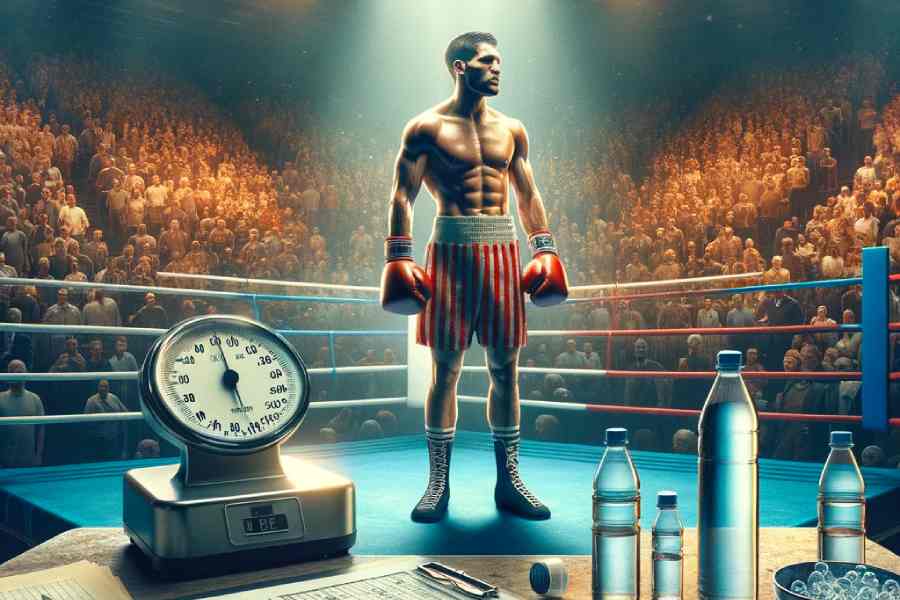When we think about law enforcement units’ preparation, we expect them to be mentally and physically ready for any situation. But, what is the best martial art for police officers?
We do not expect a police officer to get manhandled by any robber. But, in an ideal world, they would avoid unnecessary use of force at all costs.
Law enforcement officers can get into dangerous and violent situations, so they should know how to respond without the need for excessive force.
We will explain why we believe law enforcement officials should consider adding Judo or BJJ into their regular training.
Let’s analyze Judo vs. BJJ for police officers. Let’s dive in.
Judo vs. BJJ For Police Officers – What Are The Differences?

Judo, the “gentle way,” is a system of unarmed combat, modern Japanese martial art, and Olympic sport (since 1964), created in 1882 by Jigoro Kano.
He established an extensive collection of physical techniques and held it to a principle of “maximum efficient use of physical and mental energy.”
Kano’s creation transcended mere techniques to embrace principles for perfecting the ‘self.’ The objective of competitive Judo is to throw an opponent and immobilize them with a pin or submission.
What About Brazilian Jiu-Jitsu?
At the end of the 20th century, a Brazilian man named Carlos Gracie met Mitsuyo Maeda, a world-renowned Judo champion and practitioner. He took time to learn everything he could from the man.
After reaching a top level in Judo, Carlos Gracie, with the help of his brothers, evolved the skills to develop the modern version of Jiu-Jitsu.
Jiu-Jitsu is quite effective for self-defense since it doesn’t rely on chance, luck, and physical power but rather on calculated technique and skill.
There are lucky knockouts, but there’s no such thing as a coincidental rear-naked choke.
The modern variant of Jiu-Jitsu has evolved from what the Gracie family created.
Brazilian Jiu-Jitsu currently uses techniques from Judo, wrestling, and Sambo. That’s what makes it one of the most effective ground fighting methods.
Which Is Better For Law Enforcement? – Judo vs. BJJ For Police Officers

Both Judo and BJJ can improve the ability of any law enforcement unit to control individuals on the ground. But, if we have to pick only one, the answer is simple; Jiu-Jitsu is the better option.
Judo is excellent, as it focuses on breaking down your opponent’s stance to take them down or throw them effortlessly. Also, Judokas excel at positional control on the ground.
However, Brazilian Jiu-Jitsu is the top pick because the creators thought that Judo was limited, and it could be improved if you also focused on what happens after the fight hits the ground.
Thanks to that mentality, BJJ took advantage of the art it was derived from to create an expanded defense system with tons of options.
Over time, it has grown exponentially as top-level practitioners continue to develop new technique variants to this very day.
Judo training is too restrictive
Judo training is strict, and it doesn’t allow the opponent to grab the opponent’s legs, as it is illegal in competition (and thanks to that, also in practice).
The Judo submissions are also limited to a few chokes and arm locks, and most of them are lost if there is no gi involved. Judo training is gi only practice.
Jiu-Jitsu, however, has managed to focus on two variants. Gi and no-gi. The gi Jiu-Jitsu is based on Judo and uses the gi as a tool for positioning, throws, and submissions.
No-gi focuses on not using the gi, and it transfers to any day-to-day situation in which you would be wearing casual clothes instead of the uniform.
We also have to point out that the number of techniques available in Jiu-Jitsu is more diverse when compared to other grappling martial arts.
Jiu-Jitsu techniques include:
- Wrestling takedowns.
- Hip throws.
- Top position control.
- Guards from the bottom.
- Arm and shoulder locks.
- Chokes.
- Leg-locks.
- Spine-locks (Twister)
- Scrambles
As you can see, the offer of offensive and defensive options is quite extensive.
How Have Police Officers Used Both Martial Arts?

In multiple parts of the world, police and military forces learn martial arts to stay safe in hand-to-hand combat situations.
Military personnel learns hand-to-hand combat for two reasons. The first is if they find themselves unarmed and require it as a last resort.
The second is to be able to handle themselves on civilians, as the use of weapons on unarmed combatants would be unacceptable.
Some law enforcement units share this mentality and decide to train their officers for whatever situation they encounter.
The Japanese Example
In Japan, police officers have to learn Judo or Kendo, and they are not allowed to hit civilians, so they have to depend on their Judo to immobilize their targets.
Teukgong Moosool (TGMS) is employed by law enforcement and military forces in Korea, fusing Hapkido, Taekwondo, Chinese martial arts, Judo, and Kuk Too Ki.
They use Hapkido and Judo techniques to focus on grappling and submissions instead of striking when possible.
Judo and BJJ On The Field
Here are two examples of how police officers used Judo and Jiu-Jitsu to respond to situations that demanded force effectively.
In this video, we have a law enforcement unit defusing a hostage situation by surprising the subject and applying a Judo throw.
In this other video, we have an officer keeping himself calm and collected as he takes down a subject. He retains control with Jiu-Jitsu and even applies an armbar to stop the aggressor without excessive force.
Judo vs. BJJ For Police Officers -The Benefits Each Martial Art
These two grappling disciplines will give law enforcement units more tools to do their job. But they will also transform the mindset in which they enter potentially violent situations.
The most obvious benefit is that they will be able to handle violent civilians in hand-to-hand combat without the need to throw punches or use their equipment unnecessarily.
If you can take down and hold the person on the ground, there is no need to use a taser or pepper spray, much less the baton/nightstick. And even better if you land an arm lock or choke instead of punching him out.
Stress relief and relaxation
The secondary benefit is that training sessions will give them some stress relief from their everyday activities, as any combat sport allows athletes.
With their stress levels reducing from attending classes and letting it out on the mats instead, we will have relaxed police officers on the streets. This means better responses from them to any situation in general.
Including any grappling art into the law enforcement training program can only benefit police officers and the communities they protect.
Judo vs. BJJ For Police Officers – Final Thoughts
Every active law enforcement personnel should be trained in grappling arts, as they are more than likely to need that knowledge during their career.
The current system for law enforcement training focuses too much on military-style tactics and not enough on de-escalation. Therefore, there have been countless cases where the lack of proper training and excessive use of force have caused avoidable deaths.
We encourage BJJ and Judo training to be pushed forward to any law enforcement personnel. It will give them more tools and allow them to unwind and clear their minds to better respond to everyday situations.
If you liked this article, share it with friends, teammates, instructors, and even members of your local police department, or look into some of our other topics you are interested in.
We hope you have a good time and enjoy yourself on the mats during training, and we are eager to see you in the next article.





I respectfully disagree.
I have practiced BJJ and Judo over the past 30 years. I have only been in a few real fights. In all life threatening situations I instinctively fought Judo style. I have since reflected on this and asked my self why?I believe the main reasons were:
1) Judo’s speed and explosiveness
2) Judo places value on pins as well as submission
3) shock value of throws (not cutting corners with lazy take downs)
4) A philosophy of maximum efficiency is superior in unsafe environments.
5)Judo kata teaches scientific principles that can be adapted.
I love both BJJ and Judo. They are a part of my identity. They are the same but different. How can this be? Basically, the different competition rules places value on different aspects of training. So Judo players learn how to focus there energy in an explosive way. While BJJ is a patient game of chess. In short, BJJ IS SUPERIOR IN A SAFE ENVIRONMENT, one on one, with clean mats. However Judo’s emphasis on maximum efficiency is precisely why it should valued in law enforcement or a military application.
Once I was in a life threatening situation with someone bigger than myself and in a drug psychosis. I was in public in an unsafe environment. I did not have the luxury of taking him down and patiently wearing down my opponent in a calculated game of chess. My opponent was huge! I remember thinking “If the throw doesn’t finish him, I am dead”. He also looked very unclean. I was petrified of being eye gouged, bitten, and scratched. Within a split second I changed the angle of the throw so he landed on his shoulder. The shock of landing on concrete dislocated his shoulder. The fight was over in one second. And I managed to escape. If I wanted to , I could have thrown him safely or seriously injured him. It was my choice. This is the value of avoiding take downs and mastering throws.
In another situation I was outnumbered 2 to 1. The shock value of throwing rendered my opponent ineffective. If I used a takedown I would have been finished. My ground work needed to be finished in a few seconds for me to win.
Judo train in pins. Something that BJJ’s fluid style subtly does not reward as much. Judo pins are excellent for crushing and controlling people. Perfect for applying handcuffs. Or holding someone still until your police partner can apply handcuffs. Even a humble kesa katame can be perfected over years to exert such crushing pressure on an opponent it force submission. When I train BJJ my rolling partners often regard my pins with such dread. When you get held down in Judo competition you lose. What does this symbolise? The answer is warfare. If you have been held , then your opponent has chosen to control you with sufficient time until his partner has arrived to kill you. Police work with partners.
Your explanation of Judo’s limitations were a little superficial. They may make sense with an inexperienced observation of Judo. But anyone with long term experience they are irrelevant. Many throws can be adapted without gi’s. It’s a non issue.
Judo has Kata. The kata looks silly and tedious. But the Kata teaches you the scientific principle of the throw! Once you learn the principle you can adapt and modify as you grow as a student. That’s why your leg takedown or no gi argument is a non-issue. Its a different path but rewarding. When I was in high school I could easily do my maths homework but failed miserably in exams. Why? Because I failed to recognise the principles from the homework. So when presented with problems in a different form I couldn’t adapt my learning. How is this relatable to martial arts? Learning the principle will save you when confronted with different scenarios.
The relatively new no leg grabbing rule does suck. I agree. I trained to grab legs my whole life and it pissed me off. But what does it teach you in the long term though? It is a bad habit that does not develop a technique that can finish a fight in one second. Training to not leg grabbing may just save your life one day. However, an experienced Judoka can do this easily outside of Olympic Judo competition. It’s irrelevant. Its a lazy short cut.
I love both BJJ and Judo. I could write all day about them but I’ll give you a break. There is so much more I want to say. But if I could make one point it would be this: The rules of Judo ( that make it inferior compared to BJJ in the dojo) are precisely why it is better for law enforcement.
And I can only see this now after training for decades.
If you read this thank you.
First of all, let me thank you for your educated answer, as it brings a lot of interesting points to the table, and it will allow me to dive deeper into details that may be interesting for other readers.
You have practiced both Judo and BJJ over the last 30 years, which is an incredible journey, and I want to congratulate you on it.
It also means that you are no “keyboard warrior,” so let’s take a close look into everything put on the table so far and other details that may allow me to explain my view better.
First, let’s double down on how you have responded to real-life situations:
You responded in life-threatening situations instinctively using Judo, which is excellent for the problem.
Personally, I have been in fights a few times myself, and I can assure you that Judo has quickly shined through, as the Harai-Goshi and O-Goshi techniques have always been a quick answer printed in my mechanical memory.
There are points I agree with your breakdown and analysis of why and how Judo has been your go-to tool.
But let’s put them into perspective once more to get you to see it through my eyes.
1) Judo’s speed and explosiveness:
As you mentioned, Judo does focus on using quick movements to quickly put the opponent off-balance to make it easier to lift him off his base and pull the throw.
As a martial art, Judo uses principles and biomechanics to make the techniques effective, and then the practitioner practices and perfects it over time.
When we look at it from that angle, Judokas first practice the technique and then focuses on the practitioner’s conditional physical abilities (Strength, Resistance, Speed, and Flexibility) to apply them effectively.
If we replace the word “Judoka” with “Wrestler” in the last paragraph, doesn’t it make perfect sense too? And what if we do it with “Sambo practitioners” or “Jiu-Jitsu practitioners”?
I do understand that your point is on how Judo focuses on being fast and effective, but that is not only applied to Judo.
But I’ll get to that eventually. For now, I will go on touching down on the 2nd point you made.
2) Judo places value on pins as well as submission
Judo has excellent throws, but it puts a lot of importance on pins, and I have practiced with Judokas, who can exert a lot of pressure when they get into a position.
But I can say just the same about some wrestlers I have practiced with, as they also focus on throwing down and pinning the opponent.
There is one saying that is known by most of the BJJ community, and it may sound simple, but I will explain some details further.
The line is “Position Before Submission,” It is one of the approaches to Jiu-Jitsu competition and training in general.
I mention it here because it is the focus and practicality of the original Gracie Jiu-Jitsu, which came from Judo years ago.
They focused on their positioning, as they needed to stop an attacker and control him before attempting the submission.
When you focus on Jiu-Jitsu for MMA fighting, you do not attempt a leg lock out of the blue or berimbolo because you are just asking the opponent to rain down strikes on you.
You pin down the opponent and then focus on landing the submission afterward, which sounds like Judo’s strategy when the takedown does not end the fight, doesn’t it?
Most of the “Fluid style” goes out the door in situations, as you do not play when there are strikes involved, and you use your strength effectively to end the fight as quickly as possible.
As you mentioned, your BJJ training partners dread your pins, and as you said, the pins can be perfected over the years, but it is not like the same pins are not applied by your BJJ partners. The factor that has your pins and positioning to a crisp and efficient technique is your time working on it.
3) Shock value of Throws and 4) A philosophy of maximum efficiency is superior in unsafe environments.
I’ll hit these two points together, as it will be too repetitive if I jump into them one at a time.
Regarding the Shock value of throws, I agree that perfecting a takedown to adjust the opponent’s fall to cause damage or give him a safe and controlled landing is an excellent idea and great for practical applications.
Before I get to my point, I know a few Wrestlers who would be pissed off for calling their leg takedowns as “Lazy shortcuts.” ahaha, but that’s out of the scope of the answer.
Judo throws are efficient, just like Wrestling takedowns are, and we can’t argue that a well-placed German Suplex will be able to finish a fight with ease, especially out on the streets where it is likely that the person will land on concrete.
I do not think that Judo is not practical for any law enforcement unit to know; quite the contrary, I praise Japanese officers for making excellent use of it when the opportunity presents itself. Still, one reason makes me firmly believe that BJJ is a better tool for Law Enforcement than Judo, and I’ll get to it on the last point.
5) Judo kata teaches scientific principles that can be adapted.
This is one of the points where I’ll land some of the ideas that I kept up in the air earlier.
In Brazilian Jiu-Jitsu, we do not have Kata (I did, however, practice formally in multiple other arts, so I am more than well acquainted with the Kata and what it is). But that doesn’t mean that BJJ doesn’t teach scientific principles.
Like any other grappling art, we use applications of scientific knowledge to be more efficient in our moves, even when the practitioner doesn’t notice due to lack of attention.
Biomechanics and physics are everywhere in grappling, and it is just a matter of paying close attention to see how it works and making a technique work as it does.
We can’t separate our techniques from the biomechanics and principles that make them work, but we can apply them without understanding them or learning and improving.
There is a quote from Andrew Wiltse regarding competition:
You can hear it straight from him from minute 29:29 to 29:51 of “Daisy Fresh: An American Jiu-Jitsu Story”:
“People get this image of high-level guys, they kind of think we are brutes, when I think, at the highest levels, a lot of the guys are very smart, cause you have to be able to break down technique and understand the nuance to be successful past a certain point, like… brown belt? Athleticism alone is not really going to cut it because everyone’s athletic.”
As you said, “I can only see this after training for decades.”
In the current state of Brazilian Jiu-Jitsu, if it takes decades to understand some of these details, you are probably not a competitor.
There is a big reason that I have been mentioning wrestling a lot through my answer to make things clear.
When I was asked to write this article, I had to point out the most effective art for Law Enforcement between Judo and Jiu-Jitsu.
I believe Judo is an excellent tool for anybody, but as things have been in recent years, and with all the details you have to pick up to be successful, there is one thing clear.
Jiu-Jitsu is growing because it takes the best out of other grappling arts and combines it into its own.
You mentioned that you might not be able to use Jiu-Jitsu in real-life situations because it is a “patient game of chess.”
I believe that it is right there where you may be incorrect.
In most talks about Jiu-Jitsu, or general practice, the slow and patient approach to technique is used. As good as that environment is for training and learning, it will be crushed in real-life situations and competition.
Current Jiu-Jitsu is in constant evolution, and it has absorbed Judo and Wrestling to be more aggressive, more efficient, and more technical.
I didn’t mean to say that Judo wasn’t an effective tool for law enforcement, I suggested that Jiu-Jitsu (in its current state) is a more efficient tool because it uses the strengths of Judo, Wrestling, and its own techniques to dominate as the most efficient grappling art.
I do not aim to change your mind, as you have valid points and have a ton of experience to back up the claims, but I wanted to explain my points better.
Feel free to answer once more if you feel like we can touch on other interesting details. Reading through your answer and personal experiences is refreshing, as it places more into perspective than just writing down one’s ideas. As long as you have something to add, I will listen.
This is what we aim MMAWhisperer to be. A space where all of us martial arts junkies can come and exchange ideas about the combat sports we love.